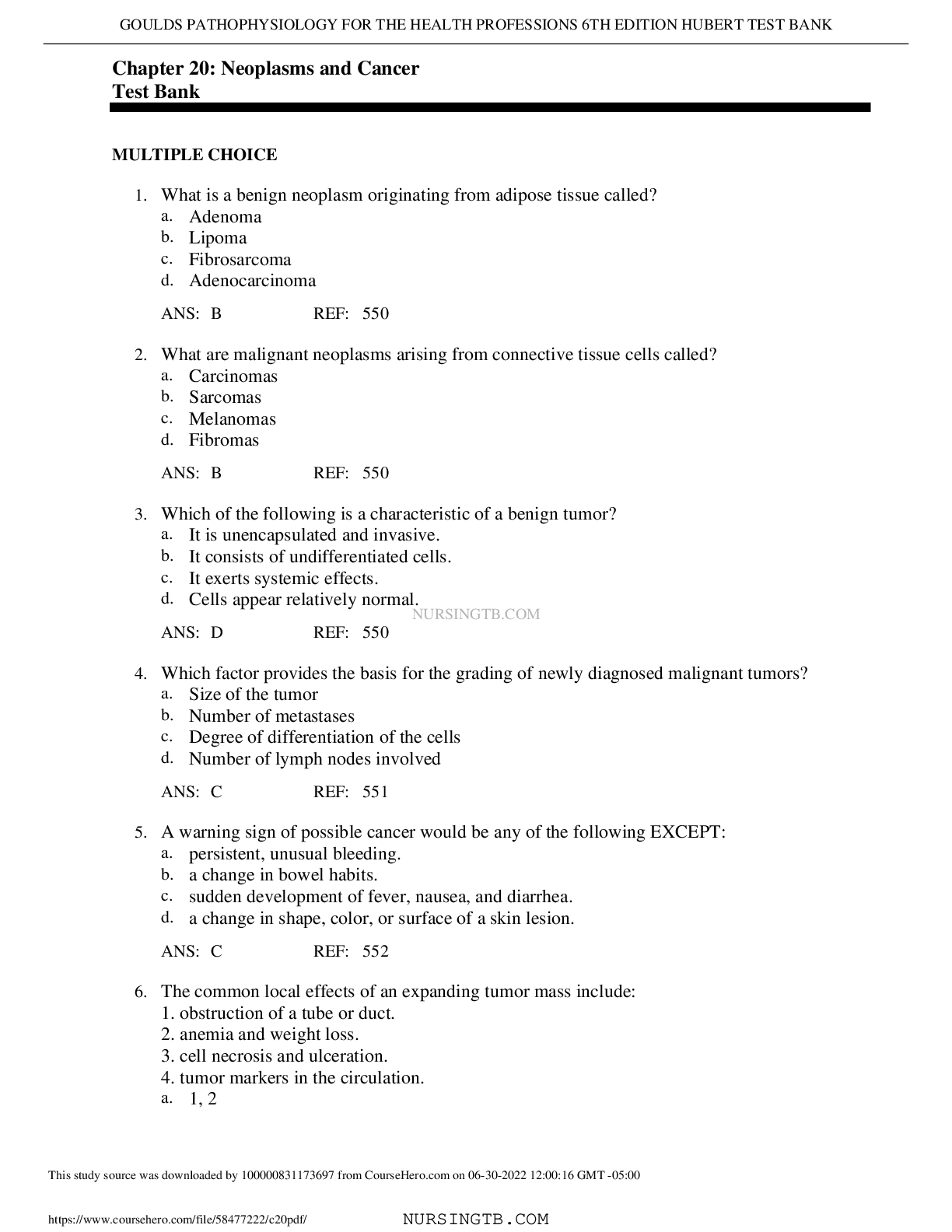Chapter 20: Neoplasms and Cancer
Course
Project Management
Subject
Chemistry
Category
Questions and Answers
Pages
6
Uploaded By
ATIPROS
Preview 2 out of 6 Pages


Download all 6 pages for $ 5.50
Reviews (0)
$5.50
